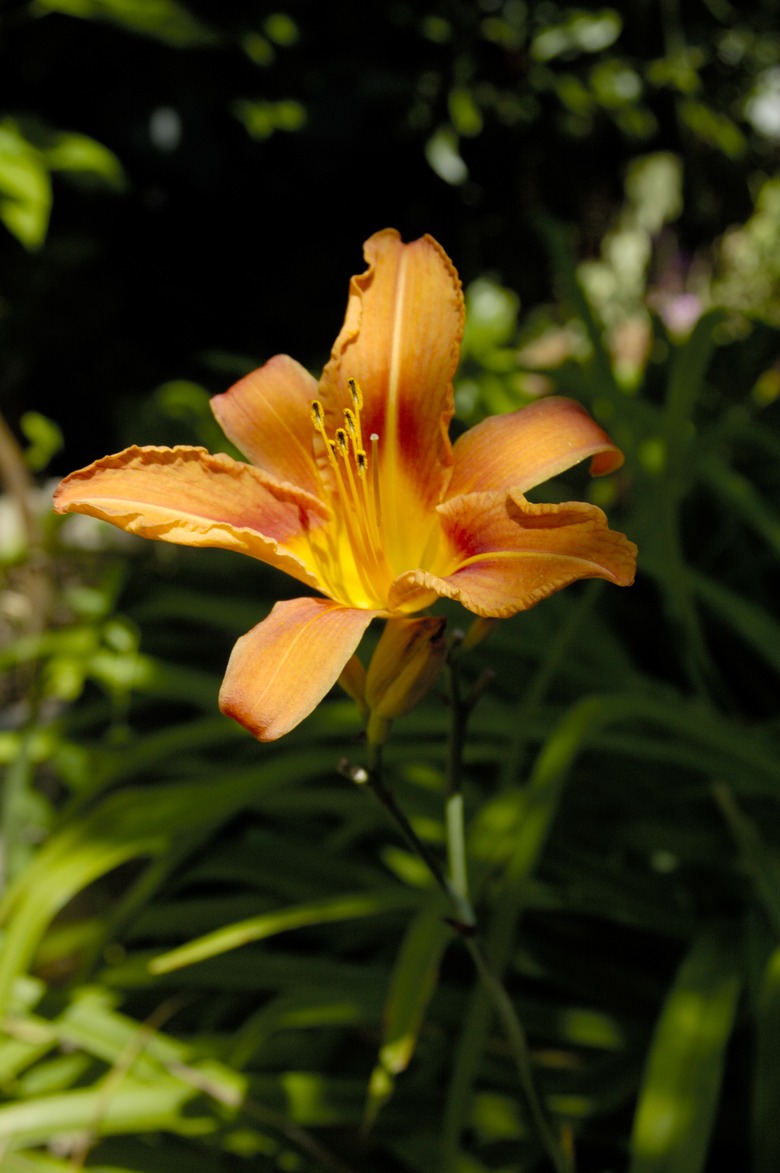How To Winterize Daylilies
Things Needed
- 2 garden forks
- Spade
- Clippers or trimmers
- Salt hay, straw or evergreen boughs
Unlike the true lilies (Lilium), which grow from a bulb, daylilies (Hemerocallis) are perennials. The most common variety features orange blooms that last for only a few weeks in early summer, but modern hybrids in different colors blossom later in the summer, and the mounds of green foliage remain attractive into the fall. Although daylilies are known for their hardiness, just like most other perennials they need to be mulched for protection and divided to have more room to grow. A few simple measures to winterize your daylilies will ensure that they thrive from season to season.
Step 1
Dig up clumps that have grown too large, in late August or early September. Place a garden fork in the ground 6 to 12 inches from the base of the plant to pry the root ball from the soil without damaging it.
Step 2
Insert two garden forks, back to back, in between roots of the clump to gently pry the roots apart.
- Unlike the true lilies (Lilium), which grow from a bulb, daylilies (Hemerocallis) are perennials.
- Although daylilies are known for their hardiness, just like most other perennials they need to be mulched for protection and divided to have more room to grow.
Step 3
Replant smaller, divided root balls back into the existing bed. Dig a wide hole 1 inch deeper than the root ball, cover the root ball with soil and add 1 inch of mulch.
Step 4
Water generously, and cut back foliage to about 1 foot tall to help the replanted daylily retain moisture. Give away the remaining roots, or plant them elsewhere. Divide the daylilies every three to five years to keep flowers blooming in abundance.
Step 5
Cut back foliage of other daylilies only if there are black spots, which are signs of a fungus.
Step 6
Remove summer mulch from all daylilies to prevent the spread of disease.
- Replant smaller, divided root balls back into the existing bed.
- Water generously, and cut back foliage to about 1 foot tall to help the replanted daylily retain moisture.
Step 7
Add a 2-inch layer of salt hay, straw or evergreen boughs to mulch the flower bed when the ground begins to freeze. These materials are better for winter insulation because they can trap and hold snow. New or replanted daylilies require a deeper layer, as much as 1 foot in climates with a severe winter.
Step 8
Remove winter mulch in the early spring or around the time the ground can be worked.
References
- The Garden Primer, Barbara Damrosch, 1988
